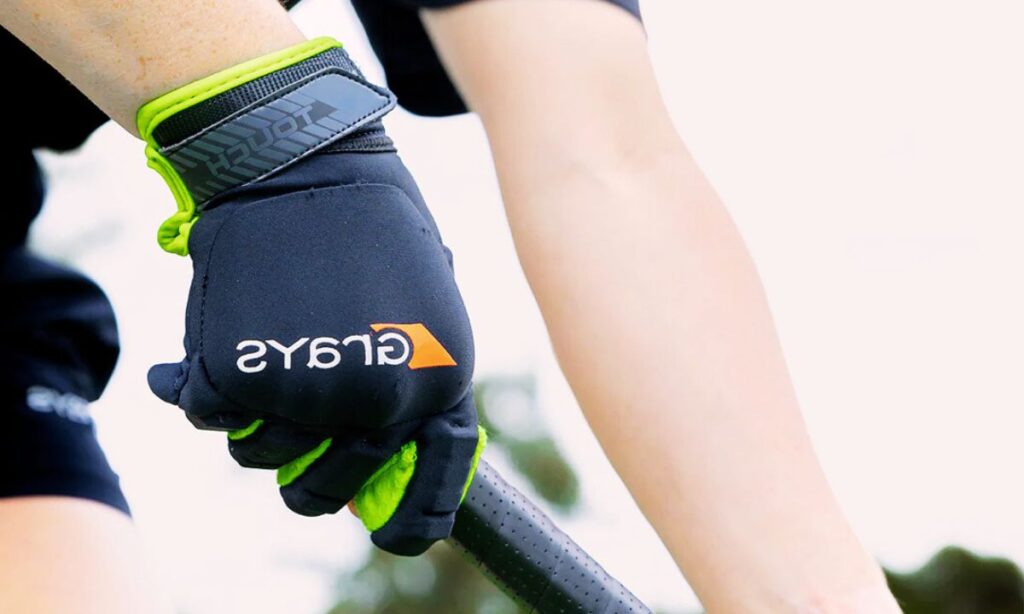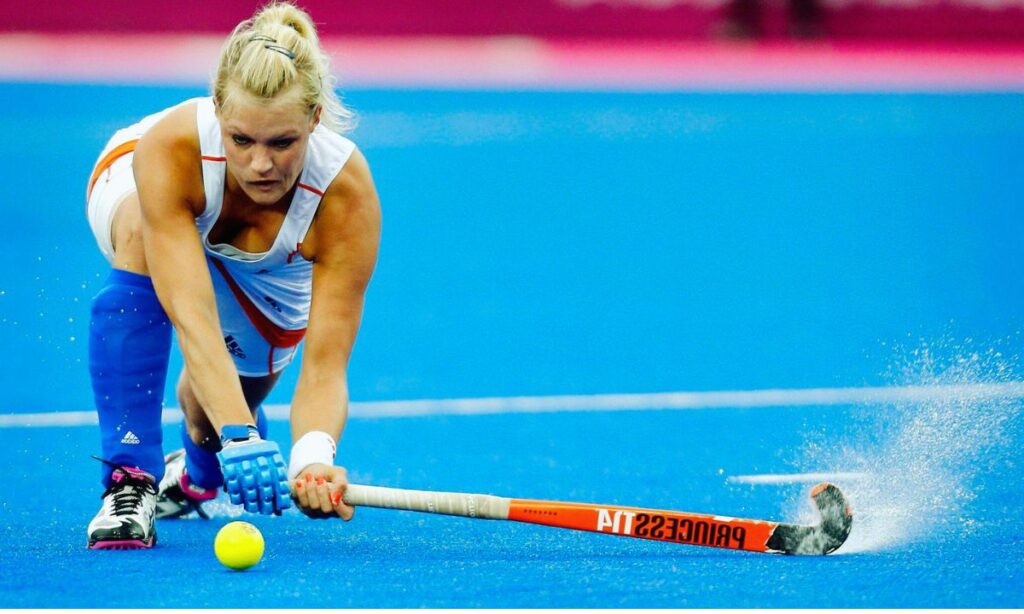When you pull on hockey gloves, you’re not just protecting your hands. You’re ensuring grip, comfort, and confidence in every pass, slapshot, and save. The right gloves make a tangible difference in performance. They reduce vibration, shield against impact, and help you control your stick better. In this guide, we’ll walk through the features that matter most—from padding and fit to materials and durability. Choosing smart can mean the difference between everyday gear and gear that genuinely supports your game. Let’s break it down step by step.
Choosing the Right Fit for Hockey Gloves
Proper fit is the starting point for picking hockey gloves. Gloves that are too loose can slip during stickhandling and leave gaps in protection. Too tight and they restrict movement or cause hotspots. Look for gloves that align with your wrist, allow full finger motion, and stay secure when you’re grasping the stick. Better fit helps with control, feel, and preventing injuries. Trying them on while clenching and releasing your stick grip is a simple test. True fit should feel natural—like an extension of your hand.
Padding and Protection: Inside Hockey Gloves
When shopping hockey gloves, pay attention to padding zones. The back of the hand and fingers should have segmented foam layers that absorb impacts while letting you articulate naturally. High-quality gloves feature reinforced zones over the knuckles, thumb joints, and side of the hand. This layered protection cushions slashes, pucks, or sticks while maintaining flexibility. A good glove balances safety and freedom of movement so your hands remain responsive. Always flex the glove fully to check that protection doesn’t feel bulky or hinder dexterity.

Wrist Mobility and Cuff Comfort
Hockey gloves come with various cuff lengths—traditional long cuffs offer more wrist protection but limit flexibility. Shorter, low-profile cuffs grant greater mobility for wrist shots and stick handling. Choose based on your playing position and style. A forward or winger might prefer shorter cuffs for quick moves. Defense players may favor extended cuffs for added protection during blocking. Good designs feature adjustable straps or stretch panels that keep the cuff secure without cutting circulation or restricting movement.
Materials and Durability
Durability in hockey gloves comes down to materials. Outer shells often combine synthetic leather or nylon with reinforced overlays in high‑wear areas like palms and finger tips. Look for gloves with dual‑density foam and durable throat panels. Reinforced seams help gloves last through practices, games, and repetitions. The palm material should be abrasion‑resistant and moisture‑wicking. A quality glove resists tearing and stays intact season after season. When choosing, inspect stitching and test flex zones for early wear signs.
Palm Construction for Grip
Grip is key when using hockey gloves. Look for palms made of suede-style material or synthetic leather with ventilated airflow panels. These materials combine feel and resilience. Some gloves add silicone grip printing or reinforced palm overlays to prevent wear. A good palm breathes to reduce sweat, dries fast, and doesn’t become slippery. You should be able to wrap your hand fully around the stick, with accurate tactile feedback. Well-designed palms strike a fine balance between softness and structure.
Ventilation and Sweat Management
Modern hockey gloves offer ventilation through mesh zones, micro-perforations, and airflow channels to manage sweat. Breathable gloves keep your hands cool and reduce odor buildup during long sessions. Moisture‑wicking liners help draw sweat away from skin, improving hygiene and fit. When gloves stay dry, they maintain comfort, grip, and longevity. Try wearing them during warm drills or hot indoor sessions to see how quickly they breathe. This little detail makes a big difference over months of use.
Flexibility and Finger Articulation
The best hockey gloves let your fingers move naturally across all joints. Look for segmented foam padding and gusseted finger tips that bend with your hand. The thumb joint should be reinforced and flexible for hooking or lateral movement. Gloves with flexible knuckle zones help maintain dexterity for stick handling and wrist shots. A stiff glove can slow reaction time or feel stiff during key maneuvers. Always simulate stick handling while trying on gloves to test flexibility before trusting them in a game.
Weight and Low-Profile Design
High-performance hockey gloves often adopt a lightweight, low-profile design. Less bulk around the gloves means faster reaction times and better stick feel. Advanced foam and shell construction allows protection without weight. Professional players often choose gloves that balance minimal bulk with comprehensive coverage. Lightweight gloves also reduce arm fatigue over extended play. When selecting gear, weigh flexibility and protection against heft. Ideally you want gloves that stay light but durable through crashes and repeated use.
Gender‑Specific and Youth Sizing
Not all hockey gloves are one‑size‑fits‑all. Women and youth players have smaller hands and need narrower, proportioned sizes. Women-specific gloves may feature narrower palms and shorter finger lengths. Youth gloves are scaled for children’s hands while still offering padding zones. Getting the right size supports growth and prevents performance issues. Don’t settle for adult gloves simply because they’re available. Proper fit improves feel and credibility of protection in young or female athletes.
Brand Reputation and Price Tiers
When choosing hockey gloves, brand reputation often reflects quality. Premium brands invest in better foam, shell overlays, and comfort linings. Mid-range gloves can still offer solid protection but may skip some advanced ventilation, grip printing, or premium materials. Beginner gloves keep costs down but may lack durability over time. Decide how often you play and what your budget allows. If you skate daily or at a competitive level, investing in a reputable brand can pay dividends in comfort and injury prevention.
Caring for Your Hockey Gloves
Taking care of your hockey gloves helps them last. After every session, wipe away dirt and sweat. Air dry thoroughly—never leave them sealed in your bag. Use an antibacterial spray or dryer sheet inside occasionally to prevent odor. Avoid drying on direct heat, which damages foam. Inspect for worn padding or loose stitching periodically. Replace liners as needed. Clean, well-maintained gloves feel softer, protect reliably, and help you play confidently day after day.
When to Replace Your Gloves
Like any gear, hockey gloves have a finite lifespan. Replace them when padding becomes compressed, fingertips lose structure, or stitching splits. If grip suffers or the glove no longer aligns securely, it’s time. Odor or worn lining that affects fit is another sign. A glove that fails to protect properly can cost you more than its price. Upgrading ensures you maintain control, comfort, and safety on the ice or field. Don’t wait until a pinch or tear becomes a game‑changer.
Breaking in New Hockey Gloves
New hockey gloves can feel stiff and awkward right out of the box. Breaking them in the right way makes a world of difference. Start by wearing them during stickhandling drills at home, gradually easing them into more intense practice sessions. Avoid soaking them in water or heat—this can damage the padding. Instead, use a glove steamer if available, or simply flex and squeeze the gloves while watching TV. Over time, the padding molds to your hand shape, and the material softens, providing a custom feel that enhances comfort and performance.
Gloves for Field Hockey vs Ice Hockey
While both sports require hockey gloves, their design and function differ significantly. Ice hockey gloves offer full-hand coverage with thick padding for impact protection against sticks and pucks. Field hockey gloves, on the other hand, are often lightweight and designed to protect just the fingers and knuckles from ground impacts. Some even leave the palm exposed for better stick feel. Choosing the right glove for your sport is essential—using the wrong type can affect grip, movement, and safety. Always ensure you’re buying gloves designed specifically for your game environment.
How Gloves Impact Your Stickhandling
The comfort and flexibility of your hockey gloves directly influence how well you handle your stick. Stiff or oversized gloves can limit your wrist motion and finger flexibility, making quick dekes or passes feel clumsy. Well-fitted gloves enhance tactile feedback—you can feel the puck or ball more clearly through the stick. This allows for more precise control and faster reactions during gameplay. Whether you’re a center setting up plays or a defender under pressure, glove performance often mirrors hand performance. Comfort equals control.
Best Hockey Glove Brands to Consider
Several trusted brands dominate the market for hockey gloves, each offering unique benefits. Bauer, CCM, Warrior, and True are among the top choices for ice hockey, known for their durability, comfort, and protection. In field hockey, brands like Grays, OBO, and Adidas provide ergonomic designs tailored for hand movement and stick grip. Research and try different models to find the one that suits your playing style. Don’t get swayed by trends—choose based on fit, build, and how the glove complements your overall gear setup.
Choosing Gloves Based on Playing Position
Your position on the field or rink can influence what features matter most in hockey gloves. Forwards typically favor lighter, more flexible gloves to maximize speed and agility, while defenders need gloves with extra padding to absorb hits and block shots. Goalies have a completely different glove setup altogether, designed for catching or deflecting the ball or puck. When you understand your role, you can choose gloves that help you move naturally while offering the right level of protection. It’s all about tailoring your gear to your responsibilities.
Youth Hockey Gloves: What Parents Should Know
Buying hockey gloves for kids isn’t just about size—it’s about safety and development. Gloves should fit snugly but not tightly, offering full protection without restricting movement. Avoid buying oversized gloves to “grow into,” as they can slip off or cause blisters. Look for adjustable cuffs, padded fingers, and breathable liners. Durability is key—kids can be rough on gear. Some brands offer youth-specific lines designed for smaller hands but with the same quality as adult models. Comfort and safety help kids focus on learning the game, not adjusting their equipment.
The Role of Aesthetics in Hockey Gloves
While performance is always the priority, the look of your hockey gloves can also play a role. Players often choose gloves that match their team colors or personal style. Modern gloves come in a range of designs—from minimalist black to bold, high-contrast patterns. Custom gloves are even available for elite-level players. Though style shouldn’t outweigh function, it can boost confidence and make players feel more connected to their gear. Just make sure the flashy design doesn’t compromise breathability, padding, or flexibility.
Importance of Palms in High-Usage Conditions
The palm area of your hockey gloves is usually the first to wear out due to constant contact with the stick. If you practice frequently or play in humid conditions, look for gloves with reinforced or double-layer palms. Some advanced models include grip patches to help maintain traction without adding bulk. When palm material starts tearing or losing grip, it affects your stickhandling and shooting. Always inspect this part closely, especially if you train multiple times per week. Replace or repair palm areas before they compromise your game.
Custom-Fit Hockey Gloves
For elite or professional players, off-the-shelf hockey gloves may not provide the perfect fit or performance. Custom-fit gloves are tailored to your hand shape, playing style, and specific protection needs. Some brands offer custom services for sizing, padding location, and palm materials. This option is particularly valuable if you’ve had past injuries or want gear that blends seamlessly with your movements. While more expensive, custom gloves can reduce injury risk and enhance stick feel. It’s an investment in precision gear, especially for those at competitive levels.
Find Your Perfect Hockey Gloves
At the end of the day, the best hockey gloves are the ones that feel like they belong on your hands. They protect you without getting in the way, enhance your feel for the game, and hold up through tough matches and long practices. Take your time, try different options, and trust how your hands feel when wearing them. It’s not about the fanciest brand or the highest price—it’s about fit, function, and how confidently you can perform while wearing them. Let your gloves become part of your winning routine.
Common Mistakes When Buying Hockey Gloves
Many players rush into buying hockey gloves without considering key details like fit, protection, or flexibility. One common mistake is choosing gloves that are too loose or tight, leading to discomfort or poor performance. Others focus only on brand names and overlook how the gloves feel during play. Ignoring palm quality or cuff design can also result in premature wear or wrist exposure. Always try the gloves on, flex your hands, and mimic game movements. A smart purchase balances comfort, protection, and responsiveness—not just looks or marketing claims.

How to Know It’s Time to Replace Your Gloves
Even the best hockey gloves wear down over time. If you notice exposed padding, torn palms, or loss of grip, it’s probably time for a replacement. Another warning sign is a lingering bad odor despite regular cleaning—it could indicate internal breakdown or mold. If the fit changes or you lose finger mobility, your glove may have stretched too far. Playing with worn-out gloves increases your risk of injury and decreases stick control. Don’t wait for discomfort or accidents—regularly inspect your gear and upgrade when your gloves stop doing their job.
Comparing Glove Models Before You Buy
Choosing the right hockey gloves involves more than picking the first pair that looks cool. Try on multiple models from different brands to compare fit, cuff flexibility, palm feel, and finger mobility. Don’t be afraid to bring your stick along and mimic real movements in-store. Some gloves offer tapered fits, others are more traditional; some emphasize protection, while others maximize flexibility. Make your decision based on how the gloves work with your hand—not just marketing language or peer recommendations. Personal comfort is more valuable than trends.
Gloves and Wrist Injuries: What to Watch For
Wrist injuries are common in hockey, especially if your hockey gloves don’t offer enough coverage. A glove with a short cuff might allow more movement but can leave your wrist vulnerable to slashes or awkward falls. Defensive players, in particular, should look for gloves with extended or adjustable cuffs. If you’ve had wrist issues before, consider models with reinforced side padding. Don’t overlook this feature—protective gloves can prevent weeks of recovery and keep you confidently in the game. Prevention always beats playing through pain.
Final Thoughts on Choosing Hockey Gloves
Picking the right hockey gloves means more than ticking boxes. It’s about fit, protection, feel, and durability blending into gear that helps you play confidently. Know your hand size, playing style, and how often you’ll use them. Try on options at different price levels. Focus on gloves that breathe, flex well, and cover your zones without compromising stick feel. When gloves feel right, you forget you’re wearing them—and that’s when performance shines. Quality gloves support you, game after game, season after season.

